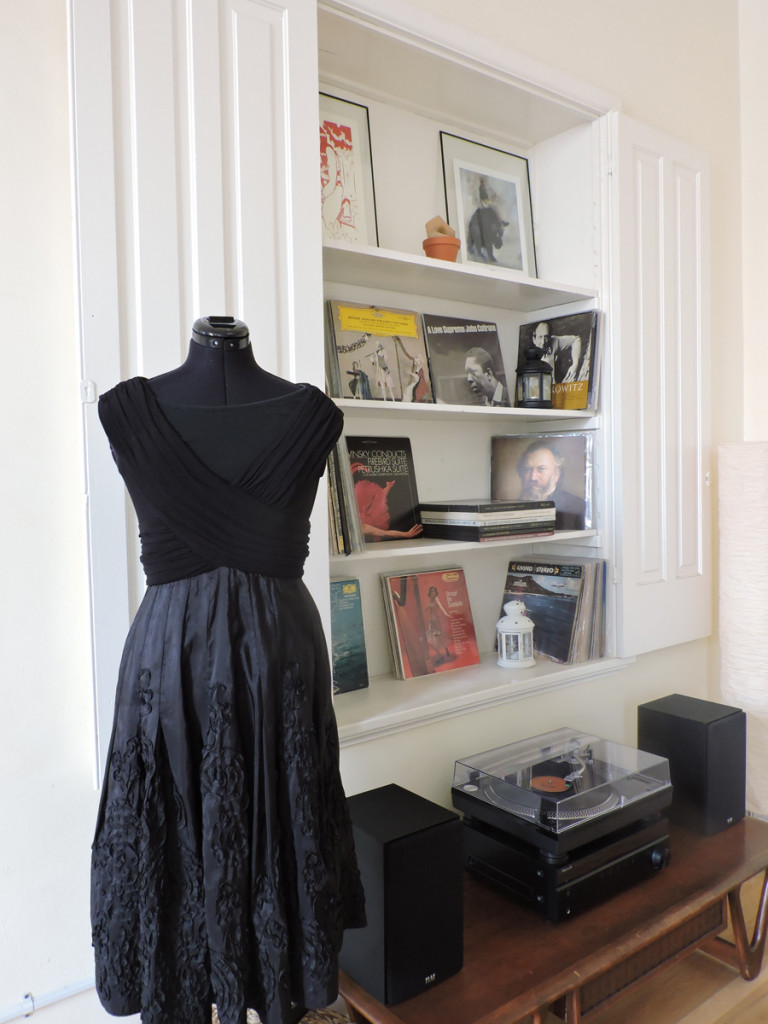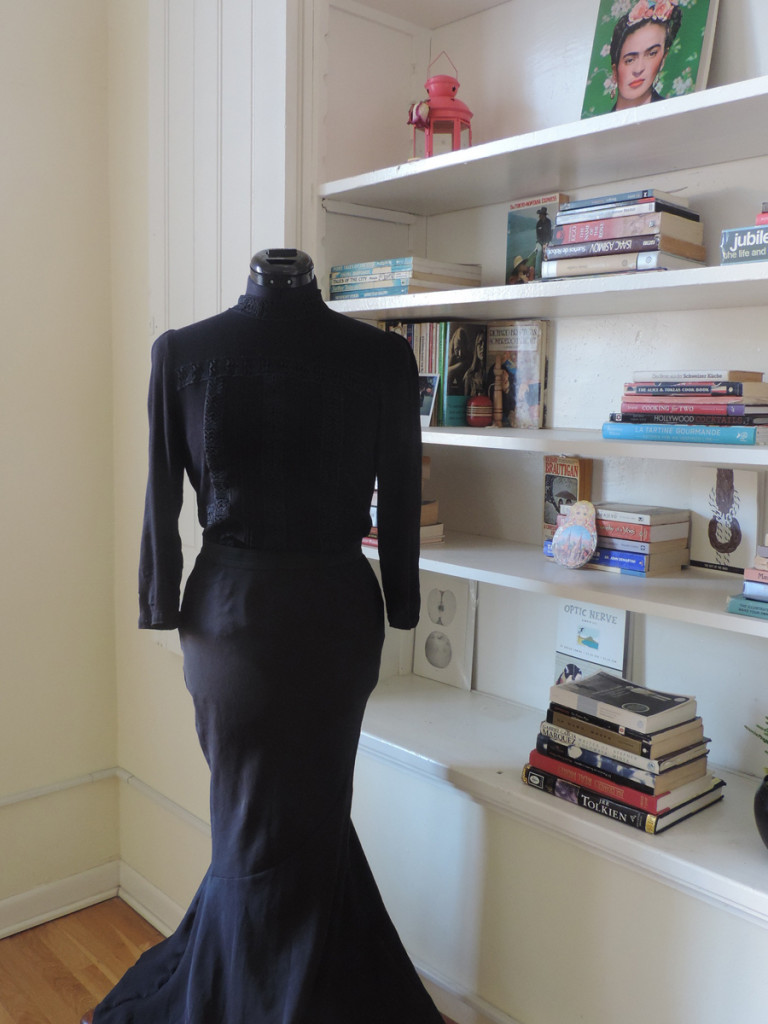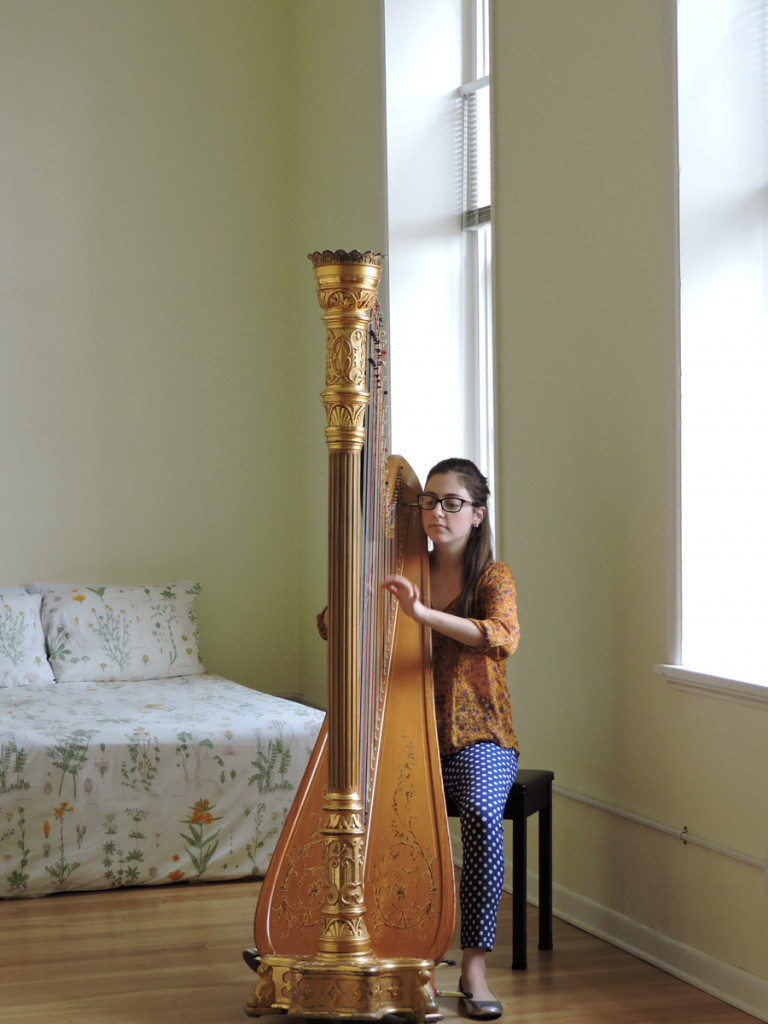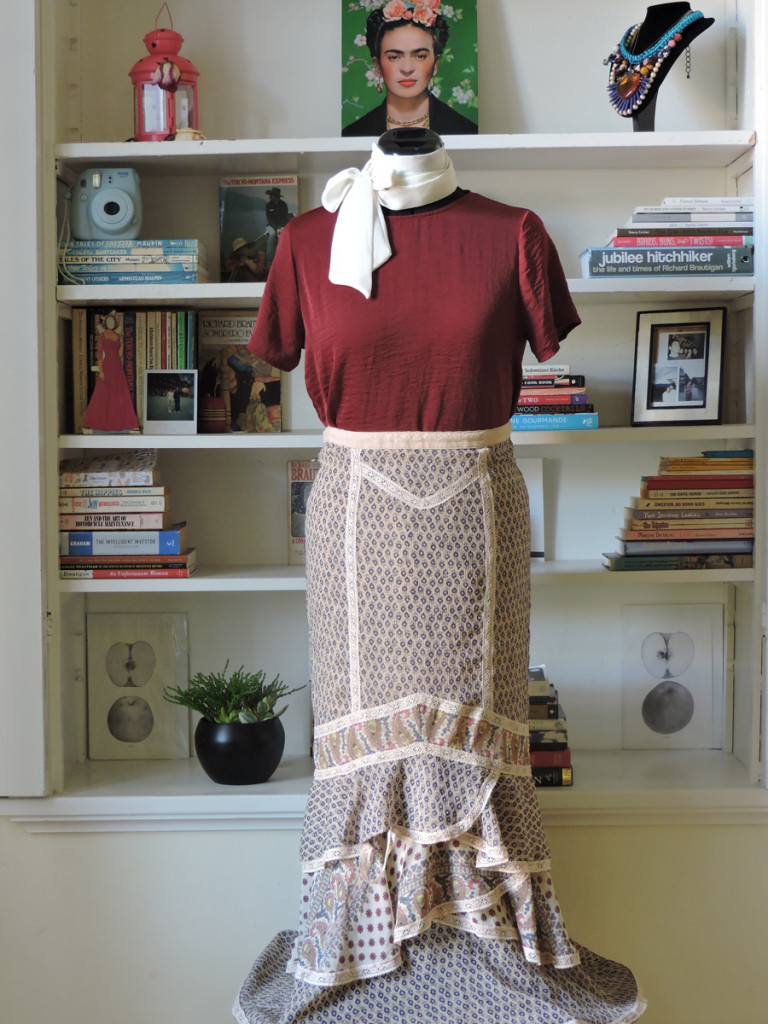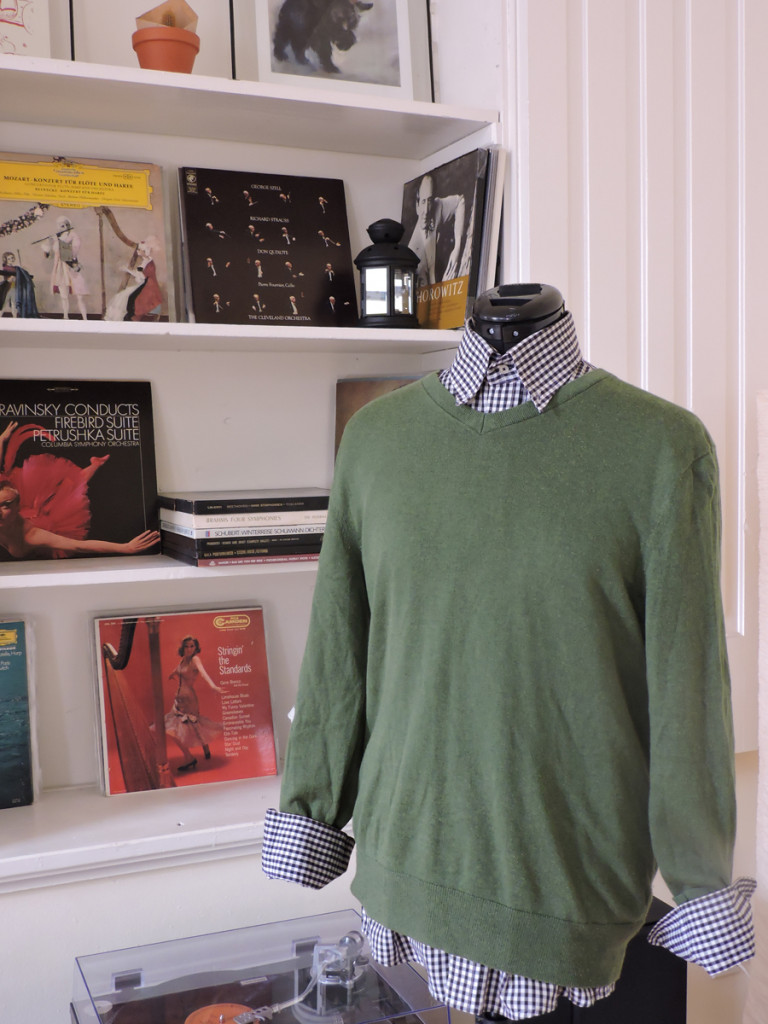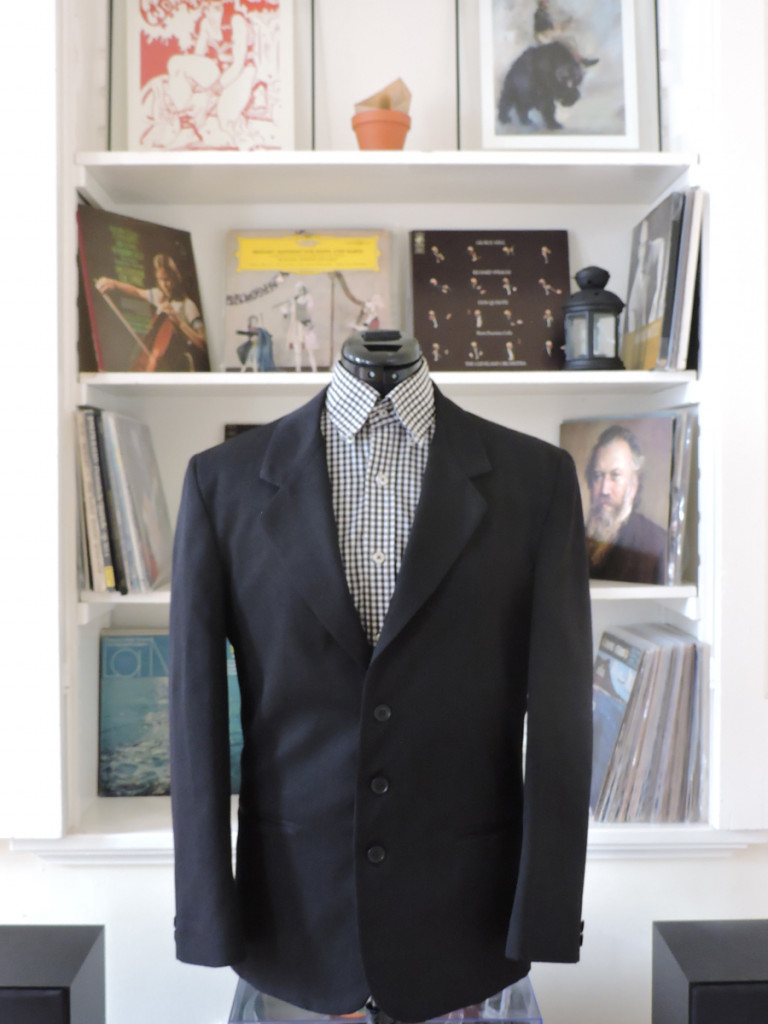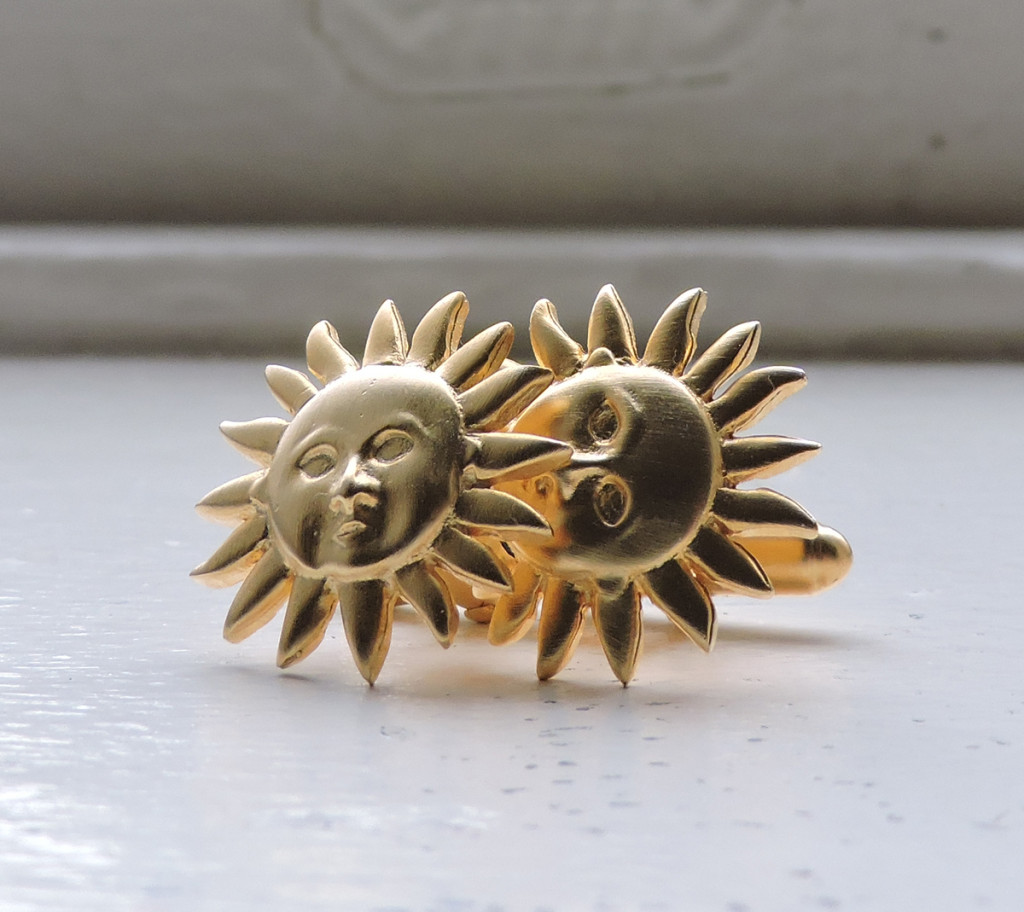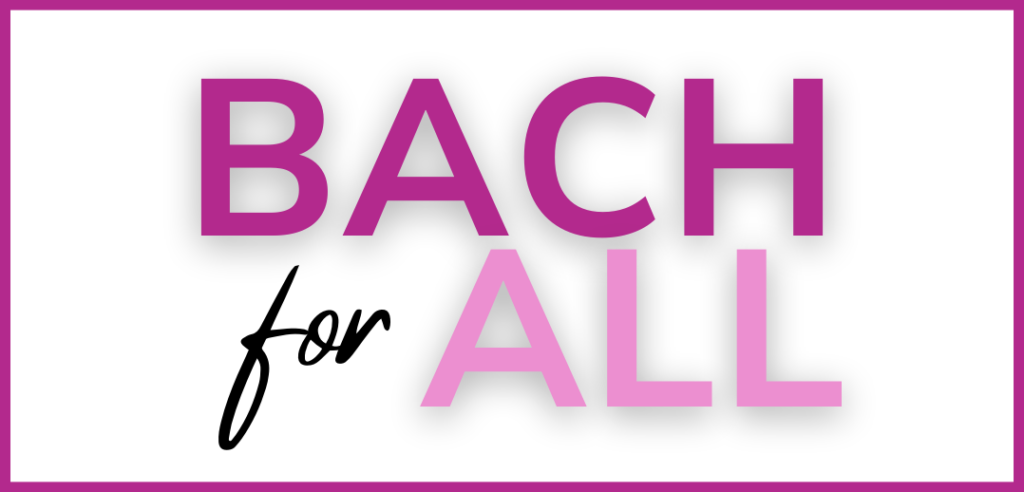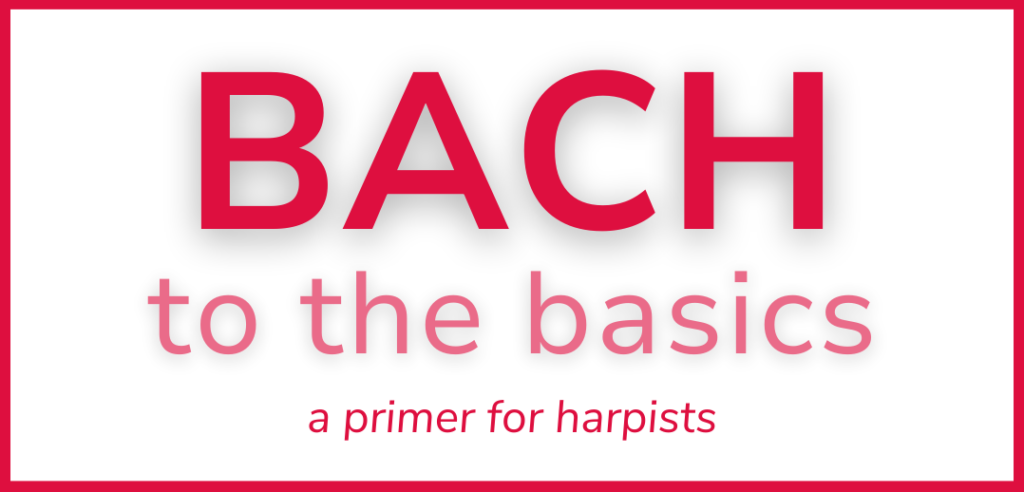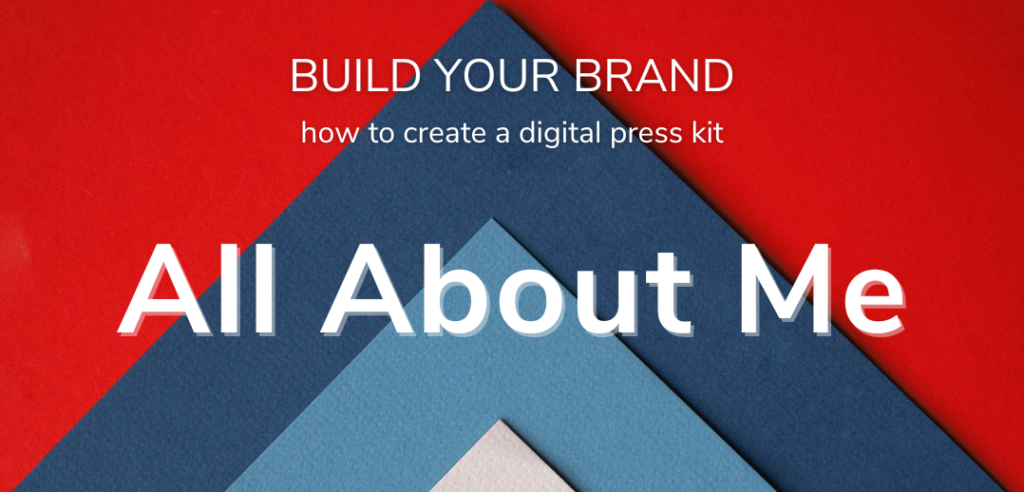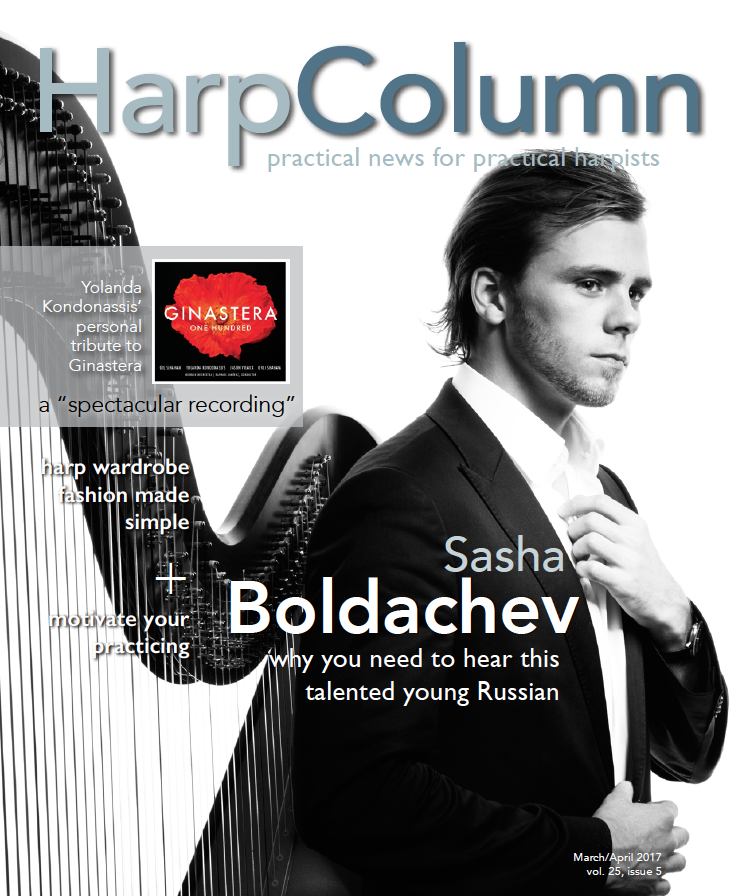—by Carla Fabris
What to wear? It’s one of my absolute favorite questions of the day and I truly look forward to browsing through my kaleidoscopic closet to see what I feel like putting together out of my staple pieces and a few (okay, many) wild cards. But when you’re a freelance harpist, the question can take on a whole new meaning. Whether I’m playing a standard wedding or a more unusual event that absolutely needed a harpist’s touch, I am sometimes at a loss and often in a rut about performance wear. I have a passion for fashion and outrageous accessories, but I have to stop myself because there are so many factors involved. Will this be something that I can move my arms in? What shoes will match, and will I be able to pedal in them? What is appropriate for what type of performance situation? What is appropriate generally and in an overall sense for the modern harpist? If you’ve found yourself asking any of these questions, read on for a few tips that will make your trips to the closet (or mall) a lot less daunting!
The Capsule Wardrobe
The first time I heard the phrase “capsule wardrobe” I thought of it as a neat little pod or bubble with a few must-have basics. My fashion intuition was right on track, but to give just a little bit of background, the term was coined by London boutique owner Susie Faux in the 1970s. Faux’s shop was conveniently called “Wardrobe,” and she was responsible for the idea of curating a small collection of classic, timeless pieces that would never go out of style. Her basics included skirts, pants, and coats that were meant to endure the ever changing trends of the weeks, months, and years. With the addition of seasonal items and the latest fashions, these classics would truly withstand the test of time. This idea of the capsule wardrobe was highly influential, making an impact on many designers to come—such as Donna Karan, who utilized the same concept in her work wear line in the 1980s. It’s a great idea to have a capsule wardrobe for all your various harp needs so you will always have something to wear, no matter the occasion. Although many of these closet staples can easily be incorporated into an every-day wardrobe, I usually keep my favorite performance gems separate from my daily clothes in order to ensure that I will be able to get many years of wear out of them.
Fashion Five
Five fashion tips to help you avoid common mistakes harpists make.
Focus on Fit
Fit is it! Make sure your performance clothes are the right size and flattering to your body type. When you find an exceptional, high quality item that just needs a little adjustment, springing for an alteration will be well worth it.
Comfort is Key
Don’t let a flashy but uncomfortable outfit affect your performance. Remember that the music comes first!
From the Inside Out
Any performance, no matter how small, is special. If you feel good in what you are wearing, it will be easy to unleash your inner confidence and musical beauty.
Replace Staples
Consider replacing the basics of your performance wardrobe every few years— especially the all-black ensembles, which can fade over time and with many washes.
Try on Anything
If you spot something on a hanger that you would love to wear yet can’t imagine yourself in, or even something that doesn’t seem to fit your personal style, always try it on. It may just become your favorite piece!
Women’s Capsule Wardrobe
To create a simple performance capsule wardrobe for women, start with bottom choices. Always have at least two pairs of pants at the ready. For a business casual outfit, a skinny silhouette, which tapers at the ankle, looks very polished when coupled with a pair of ballet flats. Vibrant colors or prints on pants and shoes can be a great way to get creative for a business casual look. For a dressier occasion, stick to a solid black style. Tailored slacks are an excellent choice. You can wear this looser type of pant with a flat shoe or a heel, just be sure that the inseam is the right length for your height so that it won’t interfere with your pedal work. Remember to keep your pant choices streamlined but not tight to ensure freedom of movement.
A versatile black skirt is an extremely helpful piece in creating many different types of performance ensembles. Look for a longer silhouette with enough of a flare to enable easy pedaling. A mermaid silhouette also works very well, as the bottom of the skirt swings out into a bell shape.
For top choices, find at least two styles of varying fabric and weight so that you will have something for multiple seasons and venues. For example, you will want something dressy yet substantial for the church concerts and wedding ceremonies that are sure to happen year-round. For the chillier months, a lightweight pullover is perfect for these occasions as churches can be quite cold. For a venue with a more controlled climate, or a warm temperature, a flowing blouse that you can tuck in or leave free is a versatile part of a performance capsule wardrobe. Collared and button down shirts are another great way to look instantly put together for masterclasses, lessons, or auditions. In general, it always helps to have some kind of neutral black layer such as a light cardigan, just in case there is an unexpected drop in temperature. Choose one in a material that won’t wrinkle easily, so you can stash it away in your gig bag. For certain events, a second layer that provides a little more structure is also appropriate. A blazer works nicely for this type of ensemble and can instantly elevate a business casual look. If you find that the sleeves are interfering, simply follow the seam lines to fold them into neat cuffs.
Last but not least, a flattering dress in, you guessed it, black! A black dress is simple, sleek, and professional. In a regular capsule wardrobe, a little black dress would be the classic choice. For a harpist’s purposes, a floor-length or flared mid-length dress or gown will be much more convenient. A plain cut with few embellishments will be useful time and time again for anything from orchestra concerts to wedding gigs. Pair it with any of the second layers listed above to slightly change the look and the function of the outfit.
As an addendum to this capsule, a white skirt and blouse, dress, or pant outfit can be very useful for young professionals or student harpists experiencing the frustration of shopping for a summer festival or outdoor concert outfit. Once you find that perfect white ensemble, don’t let it go! Unless you’re a bride, shopping for a monochromatic look in white can be a tricky endeavor!
Men’s Performance Capsule Wardrobe
It goes without saying that a tuxedo is at the core of a man’s capsule collection. This will be important for orchestra performances (I have yet to run across a symphony in which this item wasn’t a required part of the dress code), but also very convenient for a number of dressy occasions apart from musical performances. In other words, a classic tuxedo is crucial. Not to mention that it looks sharp. So how do you get excited or creative about your run-of-the-mill, wear-it-all-the-time tuxedo? Two words, my friends: cuff links! Stylish and unique cuff links can elevate your tux and infuse it with a sense of novelty and individuality even if you’re the only one who can see them up close!
For a business casual bottom choice, try a tailored pant. An ironed crease down the middle of pant legs can instantly add a crisp, dressy touch to your look. A classic pair of black pants is useful for attire that is a notch below the formal tuxedo dress. Navy pants are also a versatile choice. The dark hue is sleek and a wonderful complement to printed shirts.
Collared and button down shirts are ideal top choices for the men’s capsule wardrobe. One black shirt and one white shirt are absolutely essential as these will be needed for a number of different performance occasions. Button downs can also be layered under lightweight pullovers, with the collars untucked at the neckline and the sleeves cuffed for a polished touch. If you want to anchor the ensemble in a specific color scheme, choose a print with a few similar main hues as your outer layer. Last but not least, a versatile second layer such as a blazer or cardigan in a neutral color, is the perfect item to round out this performance wardrobe.
Shoes
A nice pair of shoes can take an outfit to the next level, and let’s face it, fancy footwear is fun! Contrary to some other instruments however, shoes really do matter when playing the harp. One day in a masterclass, I was clunking along in a very difficult passage, dense with pedal changes. The harpist giving the class told me that you should always pretend you’re a cat when changing pedals: move smoothly, stealthily, and silently. Having the right shoes to do this with can be tricky, but the bottom line is to practice in your shoe choice. In the end, everyone’s decision is totally personal and based on habit. I have seen harpists wearing everything from boots to open toed stilettos. Here is a basic breakdown with a few pros and cons.
A nice pair of shoes can take an outfit to the next level, and let’s face it, footwear is fun!
Heels: A heeled shoe can be very useful for pedaling. Some harpists find that having a little bit (or a lot) of extra height, gives their foot a better angle for pushing down the pedal. Be aware that the height of the heel may alter your seating situation. If you usually sit with your harp bench highly elevated, a heel will elongate this distance. Adjust as necessary so that you are where you would normally be positioned at the instrument. If you’re not used to wearing high heels in everyday situations, a few walking practices are in order to avoid clomping onto a stage.
Flats: I must say that I am big advocate of flat shoes for playing the harp. A ballet flat is a timeless, chic style of shoe that will help you noiselessly and gracefully skim the floor. Flats are also convenient for the before and after of performances, where harp moving comes into play. It’s much easier to maneuver packing up your instrument if you’re not wearing high heels. A downside of wearing flats is that it can sometimes lead to the habit of lifting heels when pedaling. Be sure your heels are planted firmly on the floor so your feet can be precise and in control.
No matter what kind of footwear you choose, check to make sure that your shoes have enough traction. There’s nothing worse than sliding around trying to grip your pedals. Thick rubber soles are also something to avoid, as they make it difficult to sense the pedal underneath. As much as I would love to play in my floral Doc Martens, I have tested it and found that it is just impossible. Last but not least, never attempt to play in sandals, slides, or flip flops, as it is ineffective and looks unprofessional.
Styling Tips to Remember
1. Keep your look business casual and neat for lessons and when meeting professional contacts.
This advice seems so obvious, yet its importance cannot be overstated. These guidelines will assure that you’re ready with a professional and respectful outfit. Two harp teachers taught me this valuable lesson when I was in college, and it has stayed with me ever since. It was a requirement to be dressed nicely for your private lesson every week. The degree of this can vary a little bit depending on the teacher, but if you’re in school for music performance, and your teacher doesn’t mention a dress code, assume that you’ll want to be wearing, at the very least, jeans that are intact. Although I’m the first to admit that I love an edgy, distressed jean, items like this have their time to shine—your down time, not your lesson time. For a lesson, try a pair of sleek, dark wash jeans that will exude a dressier vibe. You can also opt for a little more formality if you want. Skirts or cropped dress pants are always a nice idea as you’ll be able to show off some fun shoes too!
[pullquote]Although I’m the first to admit I love an edgy, distressed jean, items like this have their time to shine—your down time, not your lesson time.[/pullquote]
For a top choice, go for a blouse or button down shirt. Be sure that any embellishments or functional elements such as ribbons, beads, sequins, buttons, or clasps aren’t in a place where they might scratch the harp as you play. Avoiding strapless or sleeveless items is always a great idea if possible. At least the front of your shoulders should be covered in order to eliminate contact between the instrument and the natural oils found on your skin.
2. For professional purposes, err on the side of modesty.
It’s a universal experience to look back at some of our outfits of the past and cringe. I wish that someone had told me way back then that I probably shouldn’t be wearing skin-tight, faux-leather leggings to an orchestra rehearsal, even if it was in a school and not a professional setting.
I finally learned my lesson the hard way when I was asked to fill in for another harpist’s weekly gig at a hotel bar and lounge. I had picked for the occasion simple bootcut black pants, a brown cable knit sweater, and maroon pumps. I found this outfit incredibly dull and didn’t give it a second thought. After three hours of playing background music, I went home happy, check in hand. The next week, the harpist I had substituted for asked me how the gig went. I said it was great, thanked her for the opportunity and asked her to let me know if she ever needed me to fill in for her in the future. This must have been the window of opportunity she was looking for, and she gently informed me that the management of the hotel had complained about my outfit. I was completely taken aback and tried to remember what it was I had been wearing. Black polyester pants? What’s wrong with that? It’s business casual. A pullover? The pants were too tight, the other harpist informed me. The sweater had a plunging neckline. All of a sudden my missteps seemed very obvious.
Still, I lamented to my harp teacher about the incident. She sympathized a little but pointed out that it was something I should learn from. Often times, she said, people were dressing up as if they were going to the movies. I thought this was such a sweet, old school thought. I haven’t seen too many people dress up for the movies lately, but I knew exactly where she was coming from. A performance, even if it’s background music, should always be treated as something special.
Suffice it to say, don’t choose the most fitted pair of pants you own. Save those for a casual occasion. If I’m not sure, I try to imagine something I’d wear for a visit to my grandmother’s house. Try a sleek and classic look with a pair of tailored slacks and a flowing blouse. You can always do a simple front-tuck or add a skinny belt if you want to define your waist. When playing the harp, it’s also important to remember that skirts or dresses should come at least to the knee or a little below. Remember that if you are seated, a skirt loses some of its length. It should be roomy enough in order for you to sit down on the bench and be able to comfortably change your pedals. I like to do a quick test of this in a store by perching on a chair or the bench in the dressing room and pretending to play. If the skirt doesn’t stretch or drape enough, look for something longer or with more give.
3. Limit your jewelry and accessories.
I’m one of those people who will probably end up wearing their wedding band on a chain around their neck. As much as I love jewelry and especially chunky statement pieces, I can’t stand the thought of any of them interfering with the sounds of the harp. There’s nothing worse than being in the middle of a performance and suddenly thinking to yourself, “What is that noise?” It’s enough to completely take you out of the zone. This happened to me once with a pair of dangly earrings. Lesson learned.
Even if you think they’re short enough, test them out first. You don’t want any unplanned percussion during your solo recital or chamber concert. Necklaces are also tricky, as they can knock against the soundboard. Nonetheless, I have seen some of my friends and colleagues perform with accessories that were completely noise free. Use your own good judgment in selecting the performance bling that makes you feel glamorous. You can always add a pop with a pair of sparkly and light-catching stud earrings.
4. Make a plan for your hair.
What you do with your hair during a performance is just as important as your outfit. Everyone has their own preferences in this area. Whatever you do, don’t wing it with your hair. Have a plan and execute it, even if you prefer to skip the salon. After one of my performances, my harp teacher told me that my hair, which I thought I took care of pretty well, was extremely distracting. Apparently my high ponytail was swinging around behind me and having a whole little recital of its own. I was surprised by this reaction, but if it bothers someone enough to say something, it must be a valid concern. Make sure your ’do is secure and won’t detract from your lovely performance.
5. Have at least one go-to performance outfit ready.
It’s so important to have one formal, flattering performance outfit that you feel comfortable in. Comfortable in every sense of the word. If you answer yes to all of the following criteria, you’ve found it.
- I feel great in this outfit, and I look amazing!
- I can move my arms freely up and down the harp.
- I can move my feet freely for pedal changing.
- This ensemble is modest yet elegant. I can play anything from an orchestral concert to a church gig in this look.
6. Don’t lose your own touch of flair!
This may seem like incongruous advice with what I’ve mentioned earlier, but hear me out. As a fashion forward person, all of these limitations regarding professional attire used to frustrate me. I had one performance ensemble which I jokingly called my “pilgrim outfit.” After I started embracing the fool-proof capsule wardrobe ideas, I began to find ways to incorporate my own style back into my performance wear. For casual gigs you can pick a print that you love or crush two bold colors together. Get creative within the boundaries, and you’ll put the fun back into your harp wardrobe! •







